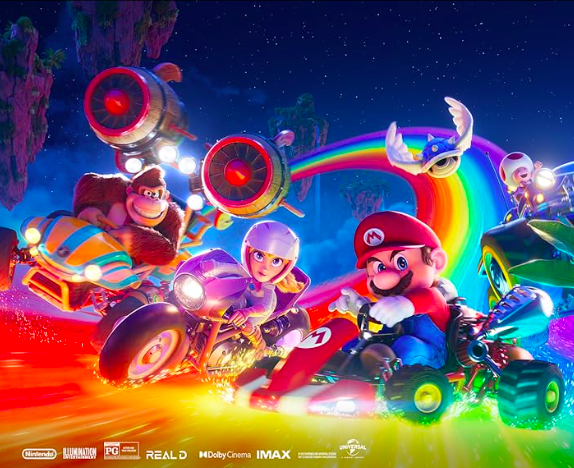A decorated gladiator steps out into the sun, brandishing two swords while donning finely detailed armor. Around him, hundreds of men and women line the seats of a massive arena, wildly screaming his name. He walks forward to address his opponent, a Roman slave whose character design is the product of meticulous behind-the-scenes scrutiny. After a few brief words, steel clashes and the two launch into intricate, bloody choreography. Suddenly, part of the arena starts to crumble and fall, taking with it hundreds of bystanders. Fire erupts from the stands, and onlookers scream in panic.
No, this isn’t a scene from “Gladiator,” or any other film for that matter – but you would be forgiven for thinking it was. This is actually a sequence from “Spartacus,” a successful high-budget series that recently concluded its run on Starz. With shows like “Spartacus” that feature the high-impact production value of the very best in cinema, audiences have access to their fill of explosions, action and drama right in their homes.

Turn now to any mainstream cinema and look at the summer billings. This year alone, we’ve seen everything from “The Great Gatsby,” “Oblivion” and “Pacific Rim” to “The Wolverine,” “Elysium” and “Iron Man 3.” Outside of the odd animated film, this summer has seen a particularly robust set of blockbusters. And of those quieter animated movies that have been financially successful, most have been sequels or prequels to major franchises. It’s hard to ignore that “Despicable Me 2” is already the highest grossing film Universal has ever released, just behind “Jurassic Park” and “ET: The Extraterrestrial.”
It isn’t entirely clear why movie studios have embraced mega-budget films with such verve, but one working theory points to shows like “Spartacus,” “Breaking Bad,” “Mad Men” and the immensely popular “Game of Thrones.” Steven Spielberg and George Lucas, perhaps two of the most recognizable blockbuster directors of all time, have both gone on record saying that their most recent movies (“Lincoln” and “Red Tails,” respectively), were almost kept out of theaters due to their lower budgets and untested IPs. In fact, according to The Guardian, the Oscar-nominated “Lincoln” nearly made a humble premiere on HBO.
When thrills normally reserved for the theater can be found in the living room, industry giants feel the sting in their wallets. Film executives now invest even more in higher budgets, complex special effects and high-end animation. This is a temporary solution with which the television industry cannot yet compete. But these gimmicks may be desensitizing audiences, a phenomenon the media refers to as “blockbuster fatigue.”
Disney in particular has suffered from audience disinterest. In 2012, “John Carter” lost the studio a stunning $177 million, and this year’s “The Lone Ranger” fell short of production costs by $127.3 million. Disney’s recent flops suggest that major blockbusters, once sure to bring studios profits, are no longer guarantors of success. Many have attributed these missteps to market over-saturation with big-budget features.
Despite the red flags, studios have failed to adjust their strategies. Looking ahead to 2015, audiences can expect to see “The Avengers: Age of Ultron,” a Fantastic Four reboot, a new James Bond, another Terminator, the penultimate Hunger Games movie, “Batman vs. Superman,” “Jurassic Park IV,” “Star Wars: Episode VII,” “Finding Dory” and “Kung Fu Panda 3.”
You’re forgiven if you couldn’t track of all of that. It’s a lot, and that isn’t even close to a complete list.
Executives aren’t content with planning these movies just a few years in advance anymore, either. James Cameron recently confirmed that he’s working on not only “Avatar 2,” but “Avatar 3” and “Avatar 4,” as well. Likewise, producer Kevin Feige has stated that his plans for the Marvel Cinematic Universe extend into the year 2021, well past the first three “Phases” that the studio has publicly discussed. This wildly optimistic attitude indicates Cameron and Feige refuse to acknowledge current trends in the market.
This isn’t to say that having more blockbusters is a bad thing; a good popcorn flick is a great way to pass the time over summer vacation. However, there may be ramifications to putting so much money into the future of one particular enterprise. As audiences get more jaded with explosions and excessive use of CGI, this new direction could place major franchises in peril. More importantly, brand recognition may be unable to overcome so-called “blockbuster fatigue.”
So what happens to the Star Wars property if it tanks at the box office? Or the next Bond film? Or, God forbid, Marvel’s “The Avengers”? And just look at that list of movies releasing in 2015 alone. If audiences aren’t bored already, it’s only a matter of time.
Søren Hough can be reached at [email protected].












